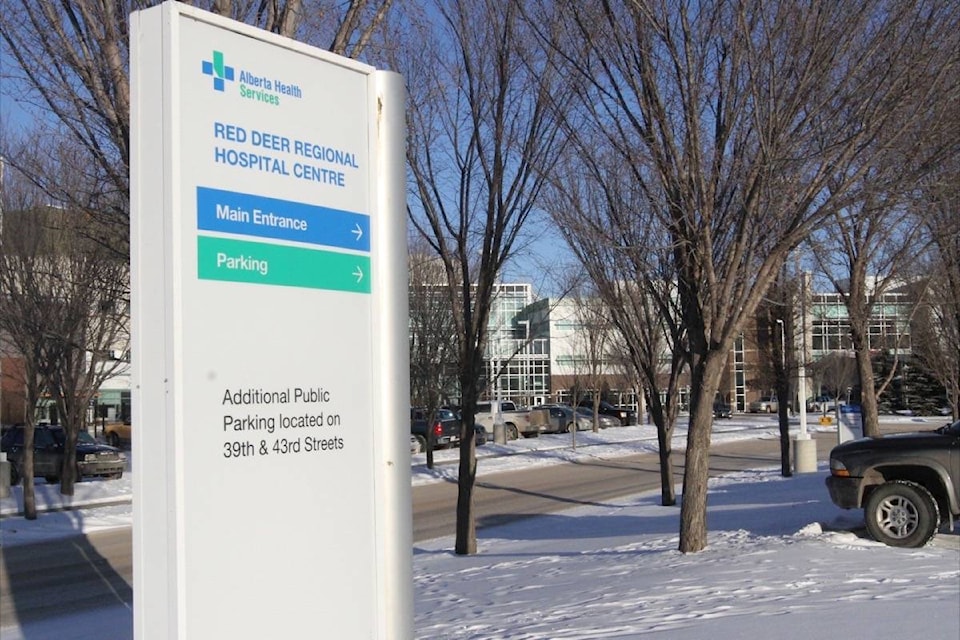A Red Deer surgeon says a recent study that shows joint replacement wait times are improving in Central Alberta is artificial.
The Canadian Institute of Health Information (CIHI) released its annual wait time data Thursday, showing wait times for hip and knee replacements in 2017 were shorter than 2016 in the Central Zone.
In the Central Zone, 83 per cent of hip replacements met the 182-day benchmark, which is the best in Alberta’s five regions. This is up from 78 per cent in 2016.
The percentage of knee replacements meeting the benchmark improved as well – with 72 per cent of surgeries being done in 182 days; up from 66 per cent. The Calgary Zone is the only region with shorter knee replacement wait times, with 77 per cent.
Dr. Keith Wolstenholme said the study’s data doesn’t include the time between a family doctor’s referral to meeting with a surgery clinic, which can take six to 12 months.
The study tracks when the patient’s surgery is booked to the day of the surgery, he said.
“That time can be artificially messed with. If a surgeon decides, ‘I don’t want to have all these patients waiting forever from the time I see them to the time I have surgery,’ then that surgeon can decide not to see as many people,” Wolstenholme said.
Wolstenholme said another problem with the study is it doesn’t show how many people are leaving the Central Zone for joint replacement surgery in Calgary, Edmonton, Lethbridge, Medicine Hat or outside the country. The number is as high as 50 per cent, he added.
Wolstenholme said one patient flew to Mexico to get a hip replaced and suffered from a post-operative complication that “probably shouldn’t have happened.”
“It speaks to the desperation patients have, that a person who lives and works in Red Deer is so desperate to get care that they leave the country and pay thousands of dollars to get surgery,” he said.
These factors give an artificial sense that the Central Zone is doing well, Wolstenholme said.
Wait times “are definitely worse. We know from looking at our wait times … and we can tell our numbers are getting longer,” he said.
Wolstenholme said there is a maximum amount of joint replacements at Red Deer Regional Hospital. He suggests removing that cap can help reduce wait times.
“We aren’t asking for more OR (operating room) time. We’re just asking to put the patients who need the surgery the most in OR spots we have available,” he said.
There is no cap on surgeries for rotator cuff tear, so Wolstenholme said doctors could do less rotator cuff surgeries and more joint replacement surgeries.
“All the government or Alberta Health Services would need to do to improve access is allow surgeons to manage their own wait times.
“You can still ensure cost certainty by not giving any more OR time. You’re still using the same amount of OR time, but you’re allowing the surgeon to use clinical discretion to decide who would be best served in that OR spot,” he said.
Wolstenholme said he has spoke with local administration about this in the past, but was unsuccessful in removing the joint replacement surgery cap.
The CIHI study shows no region meets the recommended 90 per cent benchmark for hip and knee replacements – in 2015, the Central Zone was above 90 per cent for both.
Provincewide, 73 per cent of hip replacements and 67 per cent of knee replacements are complete with 182 days. Additionally 92 per cent of hip fracture repairs are done within the 48-hour benchmark, 56 per cent of cataract surgeries are completed with the 112-day benchmark and 99 per cent of radiation therapy meet the 28-day benchmark.
sean.mcintosh@reddeeradvocate.com
Like us on Facebook and follow us on Twitter
